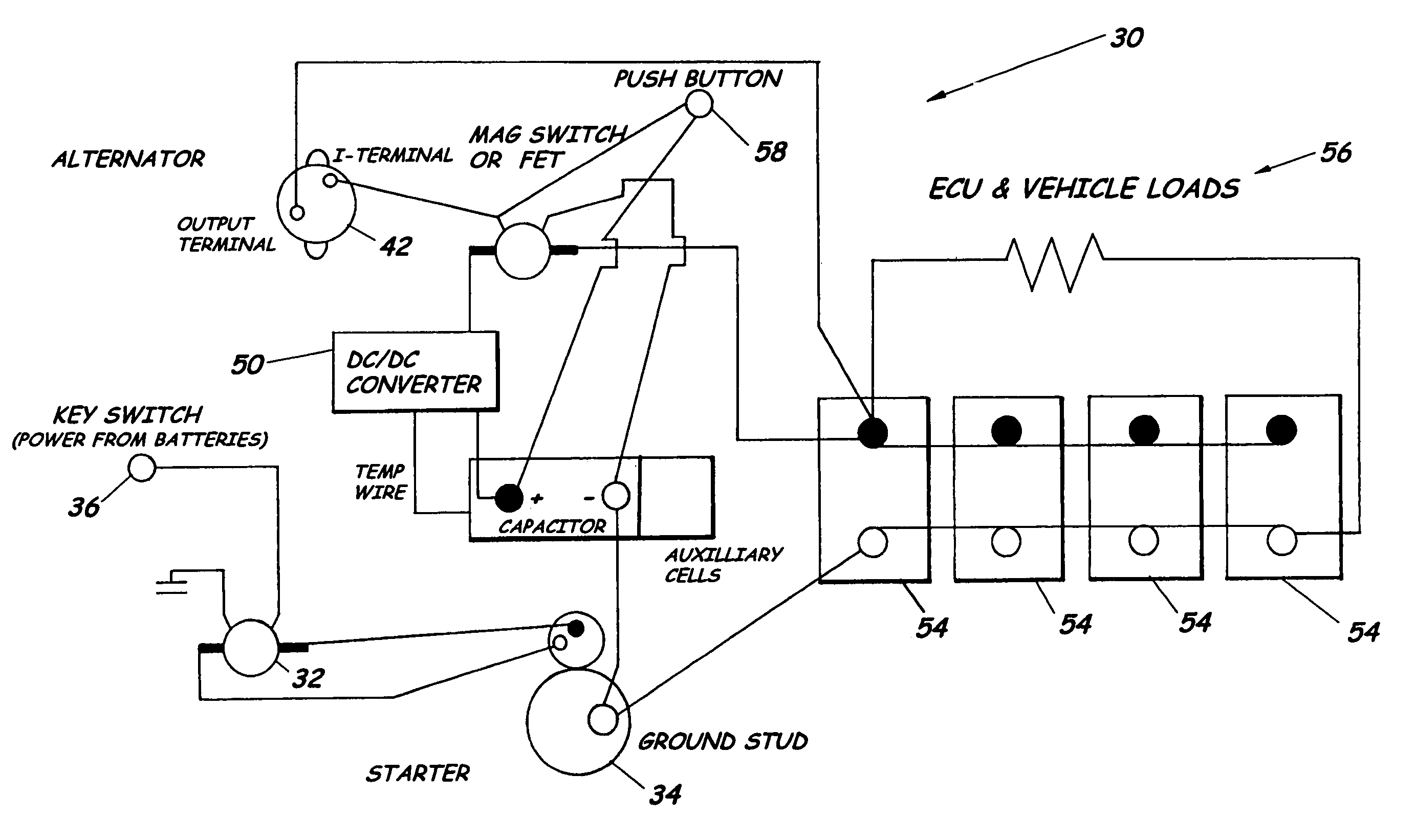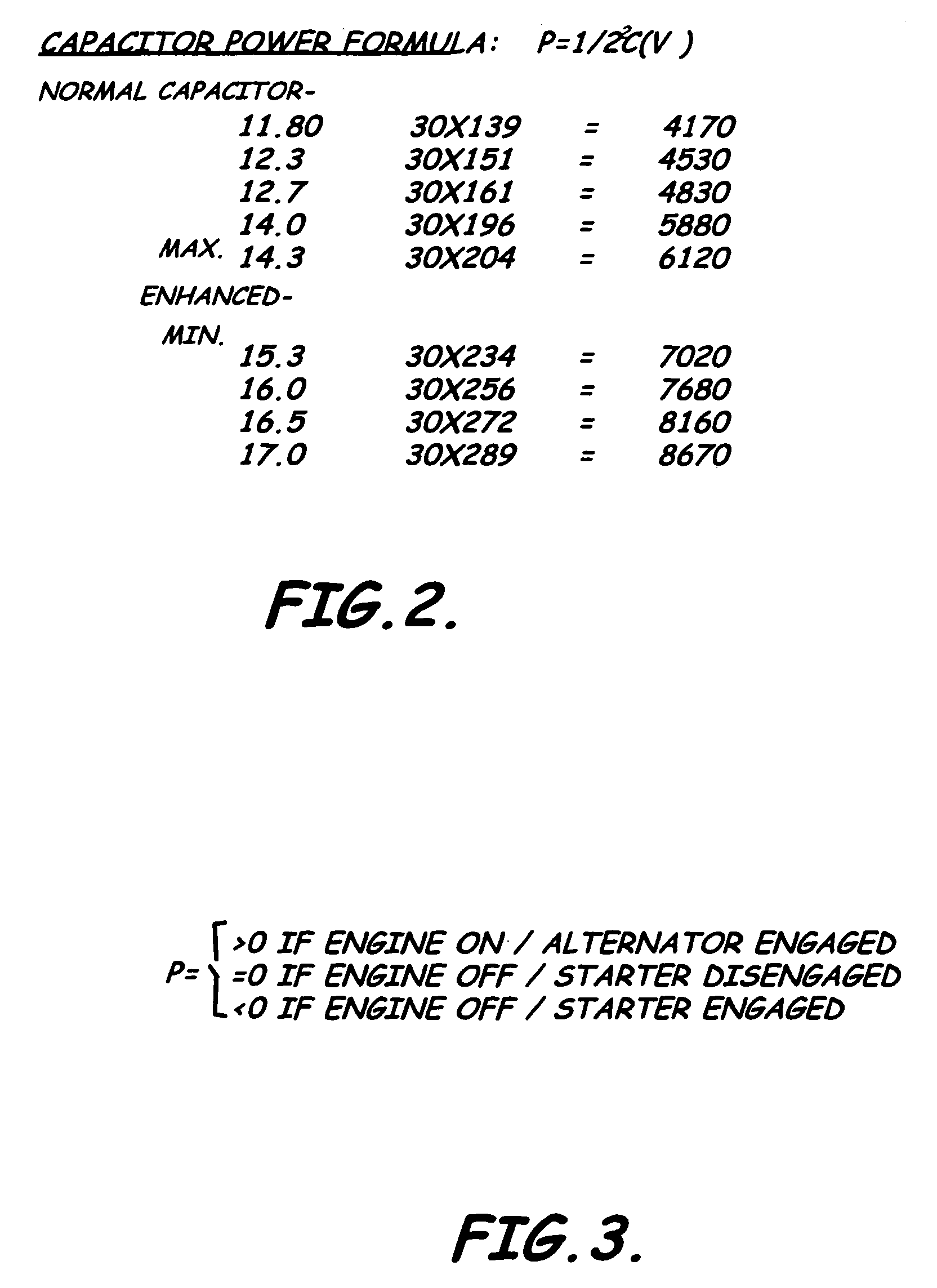Capacitor-based powering system and associated methods
a powering system and capacitor technology, applied in the field of powering systems, can solve the problems of increased cranking power, increased cranking power, and more difficult engine start, and achieve the effects of enhancing the cranking power of the engine, facilitating manufacturing, and being easily integrated into the current design of the vehicl
- Summary
- Abstract
- Description
- Claims
- Application Information
AI Technical Summary
Benefits of technology
Problems solved by technology
Method used
Image
Examples
Embodiment Construction
[0034]The present invention will now be described more fully hereinafter with reference to the accompanying drawings which illustrate preferred embodiments of the invention. This invention may, however, be embodied in many different forms and should not be construed as limited to the embodiments set forth herein. Rather, these embodiments are provided so that this disclosure will be thorough and complete, and will fully convey the scope of the invention to those skilled in the art. Like numbers refer to like elements throughout, the prime notation, if used, indicates similar elements in alternative embodiments.
[0035]FIGS. 1–7 illustrate a capacitor-based power system 30 for starting an internal combustion engine 32 for use in any type of vehicle or equipment but providing particular advantage for powering heavy-duty vehicles and machinery requiring rapid starts under harsh operating conditions. As described below, the system 30 preferably includes a starter 34 powered by a special c...
PUM
| Property | Measurement | Unit |
|---|---|---|
| voltage | aaaaa | aaaaa |
| power | aaaaa | aaaaa |
| voltage | aaaaa | aaaaa |
Abstract
Description
Claims
Application Information
 Login to View More
Login to View More - R&D
- Intellectual Property
- Life Sciences
- Materials
- Tech Scout
- Unparalleled Data Quality
- Higher Quality Content
- 60% Fewer Hallucinations
Browse by: Latest US Patents, China's latest patents, Technical Efficacy Thesaurus, Application Domain, Technology Topic, Popular Technical Reports.
© 2025 PatSnap. All rights reserved.Legal|Privacy policy|Modern Slavery Act Transparency Statement|Sitemap|About US| Contact US: help@patsnap.com



